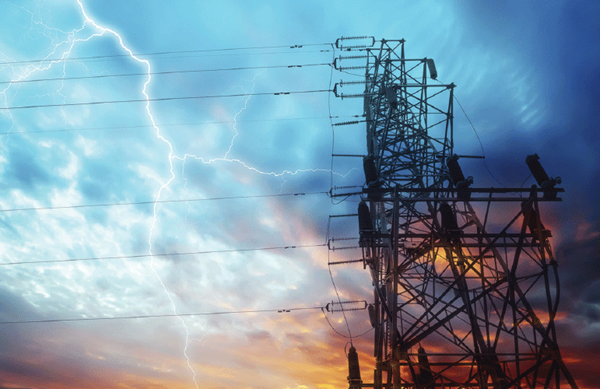From the September 2013 issue of Pediatric Emergency Medicine Practice, “An Evidence-Based Approach to Electrical Injuries in Children.” Reprinted with permission. To access your EMRA member benefit of free online access to all EM Practice, Pediatric EM Practice, and EM Practice Guidelines Update issues, go to www.ebmedicine.net/emra, call 1-800-249-5770, or email ebm@ebmedicine.net.
- “I know the child was struck by lightning, but he has no external burns, so I thought he could be discharged.”
The electrical current can penetrate deeply and cause deep tissue destruction even in the absence of extensive surface-area burns. As noted by a study by Tarim and Ezer, the cross-sectional area of the burn is inversely related to the depth/ extent of tissue injury.39 This is especially true in patients with lightning and high-voltage injuries. You should consider admitting the patient because there may be deep tissue destruction that is not externally visible. - “She had a femur fracture on examination, but I didn't see any other injuries, so I didn't get any further imaging.”
The American Burn Association does not support the administration of prophylactic antibiotics to every patient with a burn; the use of antibiotics should be reserved for those who develop infected wounds. - “The child had an electrical burn at the oral commissure. She did not require follow-up with any medical provider, because these types of burns heal without any complications.”
Patients with minimal burns to the oral commissure usually do not require extensive diagnostic evaluation or admission to the hospital; however, patients with moderate to severe burns of the oral commissure should be promptly referred to an oral or plastic surgeon because the burn may extend deeper than the superficial layer. The surgeon may place a stent to minimize future scarring. Patients with burns at the oral commissure secondary to chewing on an electrical cord are at a high risk of delayed bleeding from the labial artery 2 to 21 days after the initial incident. Inform the parents of this potential complication prior to discharge. - “Even though the patient was electrocuted after touching the third rail, his initial ECG was normal, so I sent him home.”
The third rail is the high-voltage electrified rail that provides power to a railway track. All patients with high-voltage injuries should be admitted for cardiac monitoring. Although late dysrhythmias are rare (especially if the initial ECG is normal), high-voltage electrical exposure is an important risk factor for developing a cardiac abnormality. - “The adolescent who was struck by lightning was observed in the hospital for 2 days and had a normal examination, so I arranged follow-up only with the primary care doctor.”
Cataracts are a known complication secondary to lightning strikes. There may be a delay in the development of these cataracts. All lightning-strike victims should be referred for ophthalmologic evaluation. These patients are also at high risk for tympanic membrane rupture and should have a formal evaluation by an otolaryngologist during or immediately after their inpatient stay. - “As an EMS provider, I encountered 2 adolescents who had been struck by lightning. One was injured with severe burns to his legs, and the other was unresponsive and pulseless. I attended to the burn victim and pronounced the other victim dead at the scene without any further intervention.”
The traditional rules of mass triage do not apply to victims of lightning strike. Even patients who are in cardiac arrest at the scene have a high chance of survival with immediate and prolonged resuscitation; therefore, they should be attended to first. - “I think this 6-year-old child with 12% burns can be admitted to my community hospital.”
According to the American Burn Association, any patient with > 10% surface-area burn should be transferred to a burn facility for consultation by a burn specialist and further monitoring. - “A teenage boy was found near some downed wires. On physical examination, he was well hydrated, so I did not start intravenous fluids, although the urine appeared brown. I wanted to wait for the test results.”
Victims of high-voltage electrical injuries are at high risk for developing rhabdomyolysis. The literature shows that these patients have better outcomes if intravenous fluids are initiated early in the course of treatment. - “The girl who was struck by lightning had a normal mental status and neurological examination on initial presentation to the ED, so I discharged her home to follow up with her primary care provider in a few days.”
All victims of lightning strike should have repeat neurologic examinations while inpatients, since they are at risk for developing cerebral edema several hours after the insult. Upon discharge, the patient should be referred to a learning specialist for periodic testing to ensure cognitive clarity. - “Although the adolescent appeared well after being “tased” by police, I wanted to admit him because it was a high-voltage exposure.”
Electrical exposure by electrical weapons causes minimal physical harm, since the exposure is typically brief and a low amperage. Asymptomatic patients do not require extensive diagnostic testing, ED observation, or admission.



